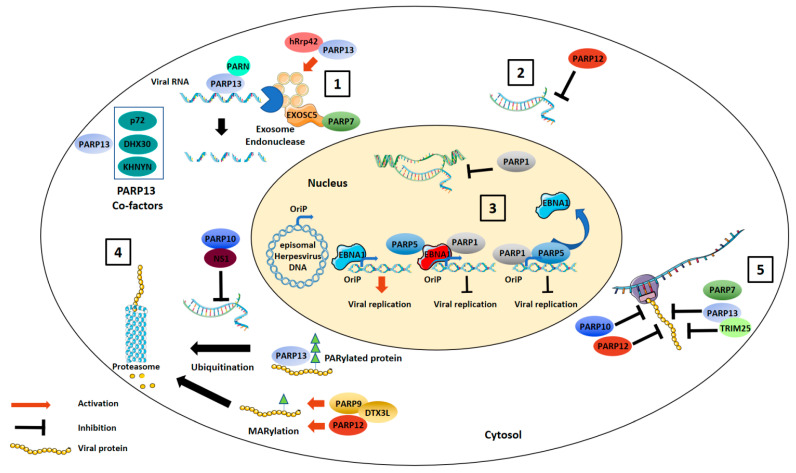Figure 1.
Direct antiviral activities of PARPs. PARP13 and PARP7 can induce exosome-mediated degradation of target viral RNAs (1). PARPs can also inhibit viral genome replication. PARP12 inhibits viral RNA transcription within the cell cytoplasm (2). PARP1 or PARP5 PARylate or directly interact with EBNA1, preventing EBNA1 binding to the OriP promoter and inhibiting Epstein–Barr virus (EBV) replication (3). PARPs directly interact with viral proteins. PARP9/DTX3L complex and PARP12 catalyze mono-ADP-ribosylation (MARylation) of viral proteins leading to their proteosomal degradation while PARP10, through binding to avian influenza virus NS1, prevents viral RNA replication. PARP13 binds already PARylated influenza A virus proteins leading to their proteosomal degradation (4). Finally, PARP7, -10, -12 and -13 are inhibitors of viral translation stopping the formation of the translation initiation complex on viral mRNA (5).

